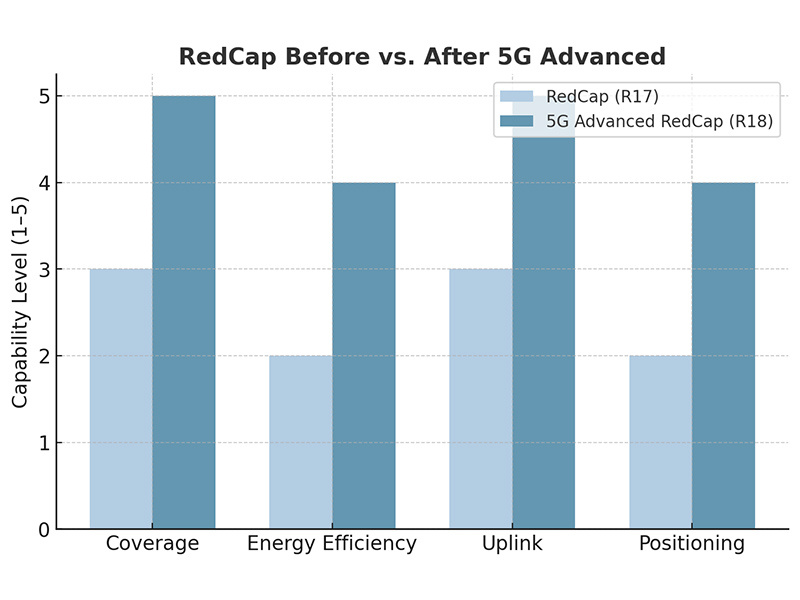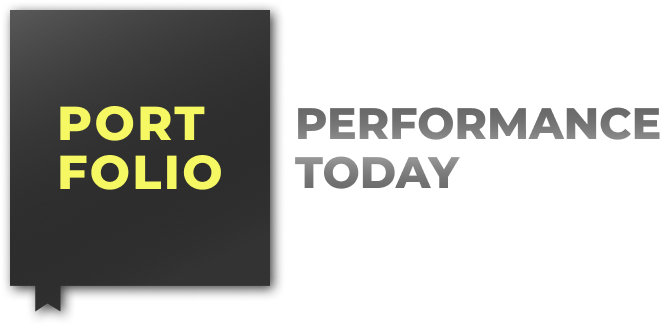

For years, the promise of the Internet of Things (IoT) has been tied to connectivity. Billions of sensors, devices, and machines are expected to operate seamlessly across industries, from manufacturing to logistics to healthcare. Yet, the network layer has often been a bottleneck—either too costly, too power-hungry, or too limited to meet the needs of diverse IoT use cases.
With the arrival of 5G Advanced and a new category of devices called Reduced Capability (RedCap), the IoT ecosystem is entering a new phase. This evolution, formalized in the 3GPP Release 17 and further refined in Release 18, introduces a connectivity option that bridges the gap between high-performance 5G devices and ultra-low-power narrowband IoT (NB-IoT) or LTE-M modules.
In other words: RedCap is designed to make 5G more practical, affordable, and energy-efficient for IoT deployments that do not require the full horsepower of enhanced mobile broadband (eMBB).
What is RedCap?
RedCap—short for Reduced Capability NR—is a streamlined version of 5G New Radio designed for mid-tier IoT and industrial devices. While eMBB devices like smartphones or AR headsets demand maximum throughput and minimal latency, many IoT endpoints do not. A wearable medical monitor, a surveillance camera, or an industrial sensor might need tens of megabits per second at most, with strong reliability and reasonable power efficiency.
RedCap strips away unnecessary complexity. Technically, this means:
-
Lower bandwidth support: RedCap devices typically operate on 20 MHz channels (compared to 100 MHz or more for eMBB).
-
Reduced antenna configurations: They use fewer MIMO layers (often 1×1 or 2×2), cutting costs and power draw.
-
Simplified processing: By eliminating some advanced features, chipset complexity is reduced, lowering device prices.
The result is a sweet spot: significantly better performance than LTE-M or NB-IoT, but at a fraction of the cost and power budget of full 5G modules.
Why Now? The Timing of 5G Advanced
The telecom industry has been cautious about RedCap. While 5G networks began rolling out in 2019, the majority of deployments focused on smartphones and fixed wireless access. IoT modules, often constrained by margins and lifespans of 7–10 years, could not justify expensive early 5G components.
With 3GPP Release 17 standardized in 2022 and Release 18 (“5G Advanced”) finalized in 2024, RedCap is now market-ready. Networks are beginning to support it, chipmakers are introducing modules, and enterprises are piloting real-world use cases.
This is important timing for three reasons:
-
Sunset of legacy networks: 2G and 3G are being phased out worldwide. RedCap offers a long-term path for IoT migration.
-
Industrial demand: Use cases like smart factories, utilities, and logistics require something more capable than NB-IoT but cheaper than full 5G.
-
Global harmonization: Standardization ensures scalability, roaming, and interoperability across markets.

How Does RedCap Compare?
To understand its value, it helps to position RedCap among existing IoT connectivity options:
-
NB-IoT / LTE-M: Extremely low-cost, low-power, but limited in throughput (tens to hundreds of kbps). Ideal for simple sensors and meters.
-
5G eMBB: High throughput (up to multiple Gbps), low latency, but high cost and energy consumption. Best for smartphones, VR/AR, and autonomous vehicles.
-
RedCap: Mid-range throughput (tens of Mbps), moderate latency, lower complexity. Perfect for wearables, industrial cameras, and connected machines.
This “middle ground” is critical. It allows industries to expand beyond basic telemetry while avoiding the expense of high-end 5G modules.
Potential Use Cases
RedCap is not designed for every IoT scenario, but it shines in several emerging applications:
-
Industrial Automation
Smart factories rely on connected robots, cameras, and control systems. Many of these devices need moderate throughput and predictable latency. RedCap modules can support them at scale, with private 5G networks ensuring reliability. -
Wearables and Healthcare
Devices like glucose monitors, cardiac patches, or connected smartwatches require reliable connectivity, mobility, and long battery life. RedCap can deliver these without the overkill of full 5G. -
Video Surveillance and Smart Cities
Cameras in public spaces or on industrial sites generate more data than NB-IoT can handle, but they don’t need gigabit speeds. RedCap’s tens of Mbps are ideal, especially with uplink optimization in 5G Advanced. -
Energy and Utilities
Grid monitoring, oil & gas sensors, and remote asset management demand reliable connections in harsh environments. RedCap balances performance and ruggedness, especially when paired with private or hybrid networks. -
Logistics and Fleet Management
Beyond GPS trackers, fleets increasingly need real-time diagnostics, video, and condition monitoring. RedCap makes it feasible without draining batteries or budgets.

The Role of 5G Advanced
5G Advanced, as defined in Release 18, enhances RedCap further. Key improvements include:
-
Extended coverage: Better support for challenging environments such as deep indoor or rural areas.
-
Energy efficiency: Mechanisms for improved sleep cycles and reduced signaling overhead, directly benefiting IoT battery life.
-
Positioning accuracy: Sub-meter-level location tracking opens doors for asset management and industrial automation.
-
Uplink improvements: Critical for video and sensor-rich applications, especially in smart cities and factories.
These refinements turn RedCap from a theoretical bridge into a practical workhorse.
Market Readiness
The ecosystem is beginning to coalesce:
-
Chipset vendors such as Qualcomm, MediaTek, and UNISOC have announced RedCap-capable platforms.
-
Module makers are introducing RedCap products targeting wearables, routers, and industrial devices.
-
Operators in Europe, North America, and Asia are testing RedCap on live networks, with some commercial launches expected in 2025.
Still, adoption will take time. Module costs need to fall, roaming agreements must mature, and enterprises will weigh RedCap against proven LTE-M deployments. Analysts expect RedCap shipments to scale meaningfully from 2026 onward.
Challenges Ahead
Despite its promise, RedCap faces hurdles:
-
Ecosystem inertia: Many industries already rely on LTE-M/NB-IoT and may hesitate to switch.
-
Cost pressure: Modules must approach LTE pricing before mass adoption.
-
Roaming and global bands: Ensuring worldwide interoperability will be essential for logistics and wearables.
-
Competition from non-cellular IoT: LoRaWAN and Wi-SUN remain strong in utilities and smart city deployments.

Enterprises will need to carefully assess total cost of ownership, factoring in device longevity, coverage, and regulatory requirements.
Conclusion
The IoT landscape has long needed a “middle option” between narrowband sensors and high-performance 5G devices. RedCap, powered by 5G Advanced, may finally deliver it. By offering a balance of throughput, energy efficiency, and cost, it promises to unlock new classes of IoT applications—from smart factories to connected healthcare.
If 5G was once seen as too much, too soon for IoT, RedCap could be the turning point. The next two to three years will determine whether it becomes the default connectivity standard for the industrial IoT era.
The post 5G Advanced & RedCap: The Missing Link for IoT appeared first on IoT Business News.
